Getting the demons off our back through food and reminiscing
BY THIN LEI WIN | THIN INK
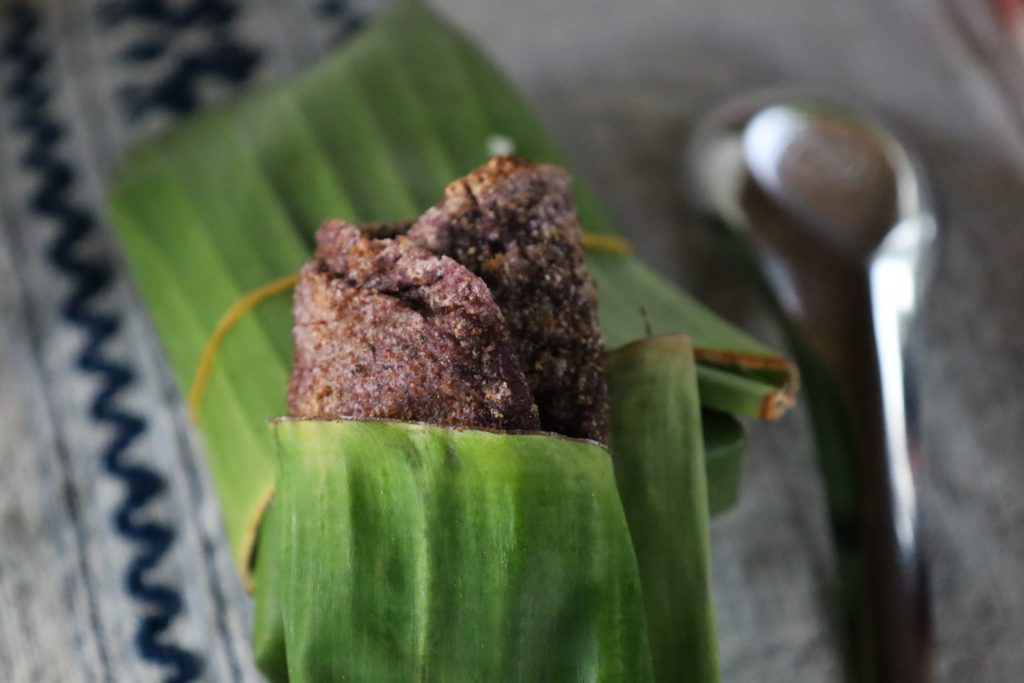
Yes, I am ripping off one of my favourite bands and one of my favourite songs for this week’s issue, but it feels apt.
You see, I’ve been in Thailand for work for the past two weeks, surrounded by two of my favourite things – food and friends. This is a stellar combination any day, but even more special when it’s food and friends I haven’t seen for at least three years, if not more.
So perhaps it’s not a surprise that it was over food – and drinks – that we exorcised the demons that have been following us for as long as I can remember.
Old readers of Thin Ink will know what I’m talking about – the coup d’état in Myanmar last year and its terrible, violent aftermath. For new readers, check out these earlier issues as well as the latest diaries published by The Kite Tales, my other hat, if you want to know more.
For much of the younger generation, these monsters are fresh. To some of us, including myself, they have been with us for decades.
But the duration matters much less than the chance to bond and swap stories over plates of delicious Thai and Burmese food. In many ways, it was the exiles’ version of truth and reconciliation – food and reminiscing fuelled by a shared feeling of loss, rage and a deep, dark sense of humour.
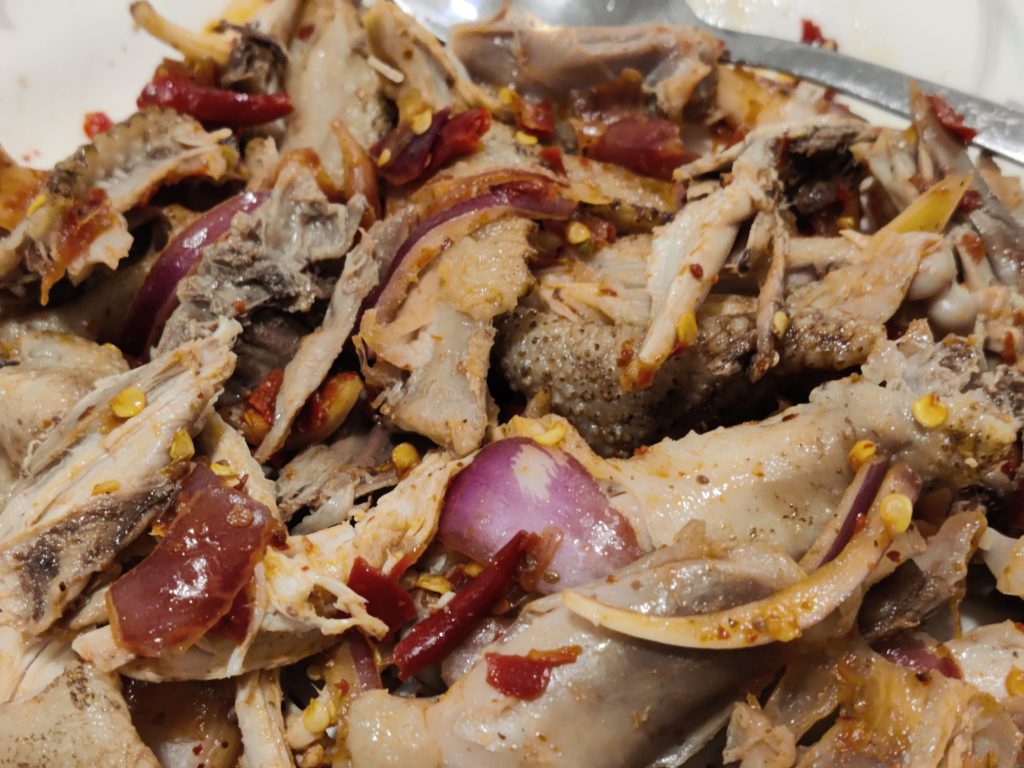
Between bites of tongue-scorchingly spicy jungle chicken salad and sips of wine, journalist friends recounted how fear and insecurity continue to stalk them. After months of not being allowed to walk freely and enduring random checks where you can be arrested or worse, seemingly natural acts of strolling on sidewalks or spying a policeman on the roads often freeze them in their tracks.
One was terrified when their plane out of Myanmar sat on the tarmac for a prolonged period of time, thinking they would be hauled off the plane. Two passengers did suffer the fate but my friend got away. Their experience reminded me of the fear and the hyperventilation that would take hold of me when I used to travel back home in the aftermath of Cyclone Nargis. I’d only breathe easily once I was in the air.

Fireworks during Loy Krathong, a famous Thai festival that is usually held in November, caused them to take to the nearest shelter.
“We thought they were gunshots,” said a good friend of my sister’s during another meal, while sipping ice-cold fresh coconut juice straight out of the fruit. We then tackled two heaving plates of seafood cooked in hot sauce. It took her three to four months to get rid of nightmares and for weeks before she went back for a quick trip to gather belongings, she became an insomniac.
Over papaya salad, crispy pork, and fish steamed with lime, garlic and chilli, an acquaintance spoke of a friend on the run because a neighbour informed the military of their work for an international non-governmental organisation. Soldiers raided the home and took away electronics as well as jewellery and other things of value. They paid bundles of money to get them back but only some were returned.
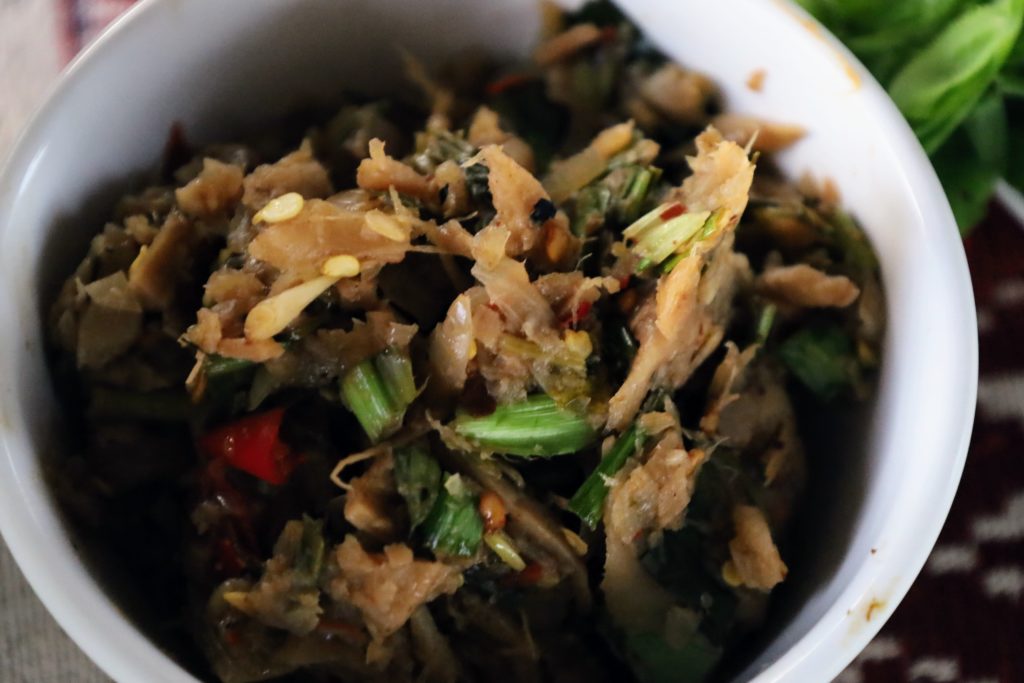
Another time, I sat next to a brave new friend as we sat along a communal table, savouring the spicy-sour offerings that included crispy fried fish, pounded fermented bamboo shoots with lots of chilli, freshly grilled khaw pote (sticky rice cake, pictured at the top) wrapped in banana leaves, and bowls of rice noodles in an umami tomato sauce.
They had recently been released from 13 months in jail, taken in lieu of the person the military wanted. This new friend deployed tactics to delay the soldiers so their friend could get away. Despite the prison time, including weeks in solitary confinement, they say they didn’t regret what they did.
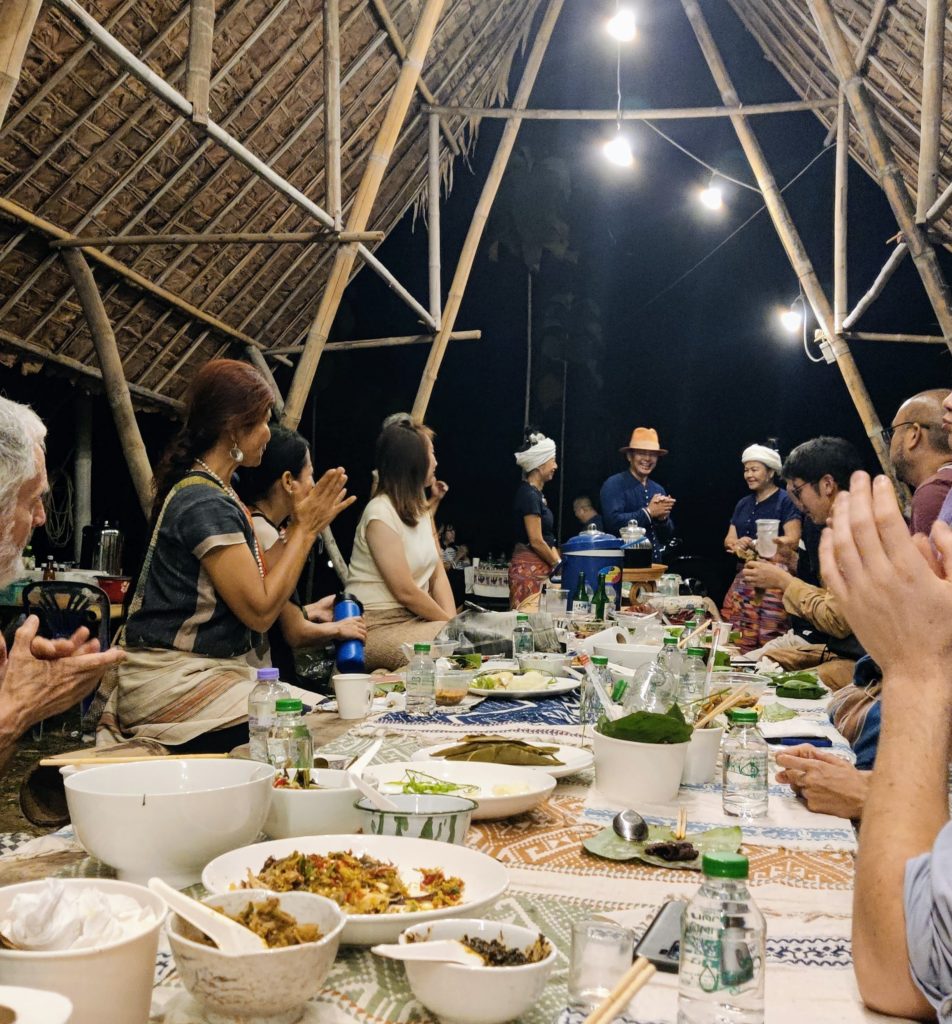
At another dinner following a meeting, I nursed a small bowl of kway teow – an unpretentiously simple but yummy soup you can find on any Thai street, this time topped with shredded chicken – and shared my hopes, frustration and fears with both Burmese and foreign friends in the media world. We gossiped. We laughed. We nearly cried.
There was also that meal where I debated tactics, lamented lost opportunities and applauded the new ventures of a friend always on the lookout for ways to help Burmese people as waiters bearing plates laden with Vietnamese delicacies – fried spring rolls, fresh spring rolls filled with grilled pork, prawns minced, steamed and wrapped on lemongrass stalks, and so on – filled our table.

I caught up with an old friend over a perfectly grilled halibut, a funky pomelo salad and a kick-ass squid stir fry, before making new friends over glasses of gingery cocktails. While taking in a paranoiac view, our discussions jumped from favourite childhood foods in Burma/Myanmar to the state of the world’s food systems and climate action, from the logistics and paperwork involved in moving to a new country to an upcoming jazz concert.
Then, one late evening, a group of us hovered over a steaming pot of mont hin gar, our national dish. As the lemongrass-laced fish soup started to boil, we poured it into bowls already filled with rice noodles as thin as angel hair pasta, chopped long beans, coriander, crispy split pea fritters, and aromatic garlic oil. After a sprinkle of chilli flakes and a dash of fish sauce, I wolfed it down without even bothering to sit. Twice.
Many others did the same. We laughed at each other and ourselves. Young, recent arrivals said they are relishing the simple pleasure of being able to leave their homes at night and not having to worry about curfews and catching the attention of gun-toting soldiers at checkpoints.
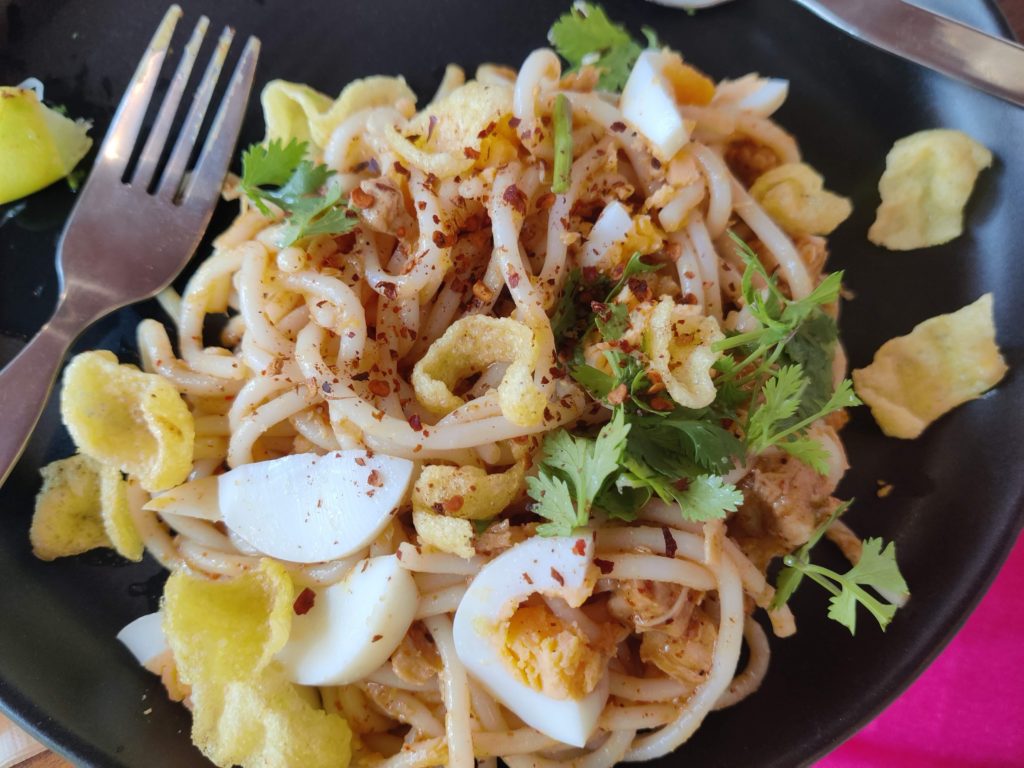
For two days in a row, I went to a small cafe because they made such delicious nan gyi thote, thick rice round noodles coated in a delicious chicken curry and chilli oil. They also had traditional breakfast fare we get in tea shops all over Myanmar, including naan bread with yellow split peas (influence from our western neighbour India) and e-kyar-kway (influence from our northern neighbour China).
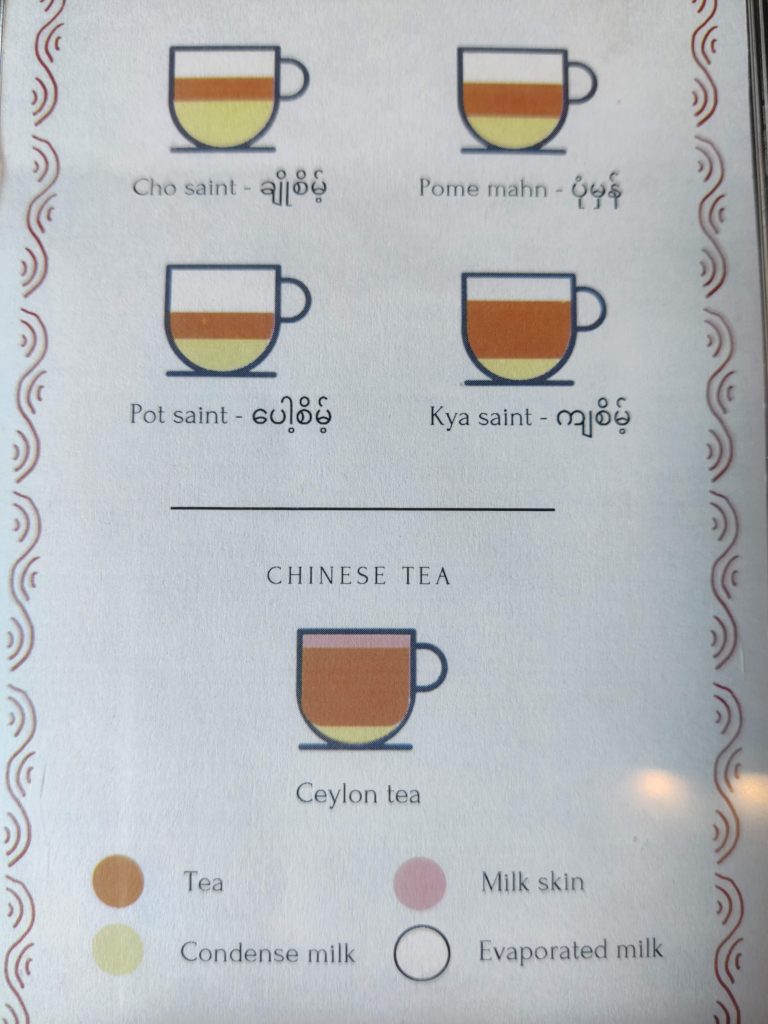
What’s happening back home is both heart-breaking and infuriating beyond description, but the simple act of sharing meals together with friends old and new has been a nourishing experience and one that I’m sure I’ll hark back to time and again over the coming months, whether I’m working to expose problems within our food systems or about the situation in Myanmar.
In fact, one of the most memorable meals I had in Thailand is also one of its most simplest and delicious. And it wasn’t even directly related to the events at home. It was on a farm, with views of lush mountains in the distance and all shades of green from a dizzying array of crops and trees nearby.
We sat on the floor around a long, low table. There were plates of freshly cooked noodles with eggs and vegetables, dollops of spicy, fermented bean paste to eat with raw, round eggplants the size of eggs, and a lightly bitter, sour soup. Almost all the ingredients came from the farm.
There were volunteers from near and far and people who work and live there, all happy, well-fed and sharing their learnings. I’m going to write about the farm, called Pun Pun, and its inspiring founder, in the new year, so please keep a lookout.

Speaking of traditional dishes, did you know that in Georgia – the country in South Caucasus, not the state in the U.S. – one measure of inflation monitors the costs of ingredients for Khachapuri, a traditional, cheese-filled bread? Well, you do now.
I discovered this while working on a story about how this small country is faring under the weight of the war in Ukraine, climate pressures, and an influx of Russians across the border.
Together with ace local reporter Elene Khatchapuridze, we spoke to farmers, ordinary consumers, experts and aid workers to paint a worrying picture of a country trying to balance multiple challenges despite rosy projections of economic growth.
You can read the story here. Georgia is in a little-known but geographically important region that usually does not attract too much attention globally, so I’m glad to have had a chance to do a deep dive into the issue.
As always, have a great weekend! Please feel free to share this post and send tips and thoughts on mastodon @[email protected], my LinkedIn page, twitter @thinink, or via e-mail [email protected].



